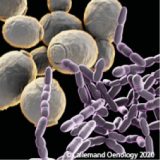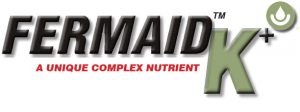
Co-Inoculation
Bacteria Under Investigation
Co-inoculation is the practice of inoculating selected wine bacteria at the beginning of the winemaking process shortly after yeast inoculation, usually 24 to 48 hours after yeast inoculation. This technique is advantageous because not only will it secure the malolactic fermentation (MLF), but also because there are definite advantages that are recognized by winemakers and professionals. For a successful co-inoculation, some parameters are crucial for its success – choosing the right wine yeast, correctly rehydrated, good temperature management and the proper yeast nutrition strategy are keys point to integrate for any fermentations. Well-fed and heathly wine yeast and bacteria leads to complete and regular alcoholic and malolactic fermentations Based on 20 years of experiences, and from the results of many collaborations between Lallemand and research center from France, Spain, Italie, South Africa, Argentina and Germany has shown the benefits of co-inoculation with either Oenococcus oeni or Lactobacillus plantarum UI-Bacteria-1-co-inoculation-South Africa-2018Use Fermaid K+ to compensate must deficience in nitrogen and micronutrients

It's unique. There is nothing else like it!
FERMAIDTM K+ is a blended complex yeast nutrient suitable for use in the alcoholic fermentation of grape must. Developed by the technical oenology group from Lallemand. Propper use of FERMAIDTM K+ helps compensate must deficiency in nitrogen & micronutrients and drastically reduces the occurrence of sluggish and stuck fermentations. Fermaid K+ marketingA non-fermentative yeast, the new LEVEL2 INITIA

A yeast that reduces sulphites in wines
Implemented, for the first time on a large scale, during the recent northern hemisphere harvest, LEVEL2 INITIA, a non-fermentative yeast which consumes oxygen, has proved to be very interesting in reducing sulphites. For the vinification of wines without sulphites or with reduced doses sulphites, winegrowers have a new weapon: LEVEL2 INITIA. This non - Saccharomyces yeast , selected by Lallemand in partnership with the Institut Français de la Vigne et du Vin (IFV) and distributed by the Institut Coopératif du Vin (ICV), showed promising results during the last harvest. To read the French article about the winemaker's experiences please click on the link below (remember to translate it to English when asked): https://www.vitisphere.com/actualite-95790-une-levure-reduisant-le-sulfitage-des-vins.htmlAlso a yeast for bioprotection.
The pre-fermentation phase during the vinification of white and rosé wines significantly increases the quality of the wines, but also carries the risk of oxidation and the development of spoilage microorganisms. These risks may result in loss of quality. In recent years, changes in winemaking practices, regulations and consumer demand have resulted in a significant decrease in the use of sulphites. Increasingly, winemakers are considering bioprotection of musts using non-Saccharomyces yeast. Each species of these yeast has its own specific contribution and differences between strains can also be observed within the same species. For more information on this new exciting product please click on the link below: Level2 Initia Article Wineland December 2021
